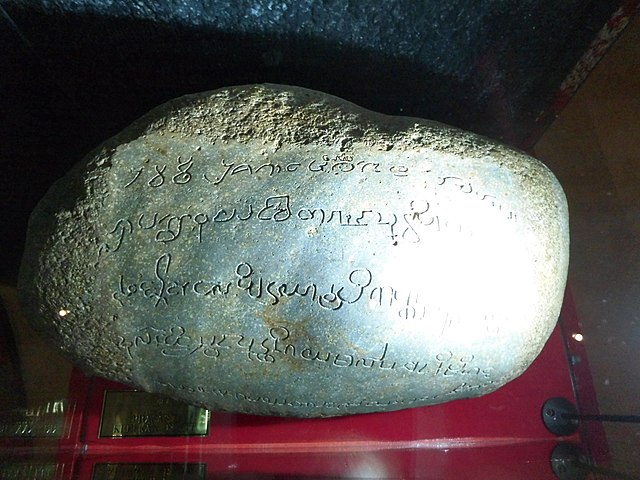Kedatuan were historical semi-independent city-states or principalities throughout ancient Maritime Southeast Asia in the present-day Philippines, Indonesia, and Malaysia. In a modern Indonesian/Malay sense, they could be described as kingdoms or polities. The earliest written record mentioning the term kadatuan was the 7th-century Srivijayan Telaga Batu and Kota Kapur inscription from Sumatra, Indonesia.
Kota Kapur inscription contains the word kadatuan çrivijaya.
Srivijaya, also spelled Sri Vijaya, was a Buddhist thalassocratic empire based on the island of Sumatra that influenced much of Southeast Asia. Srivijaya was an important centre for the expansion of Buddhism from the 7th to 11th century AD. Srivijaya was the first polity to dominate much of western Maritime Southeast Asia. Due to its location, Srivijaya developed complex technology utilizing maritime resources. In addition, its economy became progressively reliant on the booming trade in the region, thus transforming it into a prestige goods-based economy.
Talang Tuwo inscription, discovered in Bukit Seguntang area, tells the establishment of the sacred Śrīksetra park.
Floating houses in Musi River bank near Palembang in 1917. The Srivijayan capital was probably formed from a collection of floating houses like this.
The Kedukan Bukit inscription displayed in the National Museum of Indonesia
The golden Malayu-Srivijayan Avalokiteśvara Bodhisattva in Rataukapastuo, Muarabulian, Jambi, Indonesia





